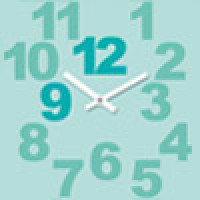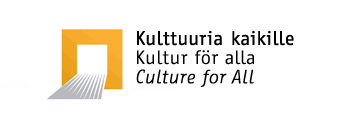
City Ghettos of today explores the invisible borders in six European cities
The City Ghettos of Today is a unique artistic initiative organized by 24 non-profit organizations, theatres and public bodies from 7 European cities: Paris, Warsaw, Helsinki, Berlin, Milan, Bologna and Antwerp.
It unites artists from around the world with local communities of the project cities through a series of artistic workshops, performances, installations and discussions that focus on the concept of ghetto from different angles. Members of the project team from Helsinki are heading to the third of the cities, Bologna, to realize one more installation in cooperation with the international team before Helsinki´s turn in September.
At the heart of the project lies a desire to construct together meaningful experiences and new ways of understanding the concept of ghettos in different European cities. Do spatial, invisible or abstract walls separate groups of people from other groups? Why, when and how this happens in the different cities? Each city team defines the approach to the ghetto-concept according to the local context. The experiences of migrants and/or ethnic minorities are also present in each city, both in the contents as in the different backgrounds of the core team of artists.
Transformable installation as a tool of cooperative creation
The main building material of the installation will be different sized tubes that transform into containers for sounds and voices, video screens or corridors for actors. The building process is combined with a series of dialogical meetings with representatives of different communities in each city. More than an independent and finalized work of art, the installation is a travelling tool for exploring the theme during the collective period of creation. A final installation that compiles the experiences and materials from each city will be constructed in December 2014 in the State Ethnographic Museum in Warsaw, the hometown of the coordinating association of the project, Strefa Wolnoslowa.
To Helsinki after Paris, Bologna and Warsaw
So far The City Ghettos of Today project has organized an artist-in-residence in Paris and in Warsaw, during which an installation and a theatre performance was created in both cities together with members of the local communities and the international artist team of the project. The next city to receive the travelling installation will be Bologna, the town of the project´s artistic director, theatre director Pietro Floridia. After that it is Helsinki´s turn.
In Helsinki the installation will be built to Cultural Centre Stoa between 9.9. and 19.9. in a process of workshops open for participants from Helsinki. Performances will be realized also in other places in the city. A seminar presenting the project cases of Warsaw, Bologna, Paris and other cities will take place at Lavaklubi of the National Theatre on 16th of September at 14-18.
Helsinki installation focuses on borders that hide wisdoms
In Helsinki the point of view to the theme of ghettos concentrates on limits that make it difficult to share different types of knowledge. With whom can individuals from varied backgrounds share their knowledge, visions and practices and what kind of communities does this process form? Experiences related to this are treated on dialogical meetings with individuals from Somalian, more widely African, Latin American, Arab and Russian backgrounds, focusing on individuals from one these groups at a time. The process of interviews is done in cooperation with multilingual writers residing in Finland from Sivuvalo Project.
The experiences of the encounters are used as contents for the transformation of the installation in workshop where the team of artists works with the local participants.
The installation comes with video and audio contents from Bologna, Warsaw and Paris. In cooperation with the team and local participants, the installation contents will be replaced with contents created in Helsinki during the workshops. The installation starts to adapt to the local conditions, losing one by one its previous elements and adapting to the local setting.
Parallel workshops are free of charge and they will take place between 9.9. and 19.9. mainly at Cultural Centre Stoa. These include sound work and collective composing based on the material collected in Helsinki; video work, drama work, installation building and public presentations of performance art based interventions.
The Helsinki-based members of the artist team are Alejandro Olarte, electroacoustic musician and composer-educator-researcher from Colombia, Walter Fondo, actor and association activist from Cameroon, Marek Pluciennik, video artist from Poland and Eveliina Heinonen, drama educator born in Finland. In September the local team will be strengthened by six more artists and a team of documentarists and researchers coming from the the different cities. The international project is coordinated by Strefa Wolnoslowa association based in Warsaw and directed by theatre director Alicja Borkowska in cooperation with already mentioned artistic director Pietro Floridia, also theatre director, from Bologna.
Project partners in Finland are Arts Promotion centre (reg. artist on cultural diversity), Helinä Rautavaara Ethnographic Museum, Cultural Centre Stoa, Citizen´s Forum, Ptarmigan ry, Pacunet ry, National Theatre´s audience development and Sivuvalo-project of multilingual writers.
Project is financially supported by European Commision - Program Europe for Citizens and co-financed by Evens Foundation. Helsinki project is supported by Arts Promotion Centre, Citizen´s Forum and, from Pacunet´s part, Ministry of Culture and Education.
The first Helsinki preworkshops have taken place between February and June testing locally some of the working methods. For September the group of participants will invite new members. People interested in participating in the creative process can send their inscription to outi.korhonen(a)minedu.fi at the latest on August 15th.
Additional information
Outi Korhonen outi.korhonen(a)minedu.fi, +358295330805
This communication reflects only the views of the author, and the European Commission cannot be held responsible for its content
